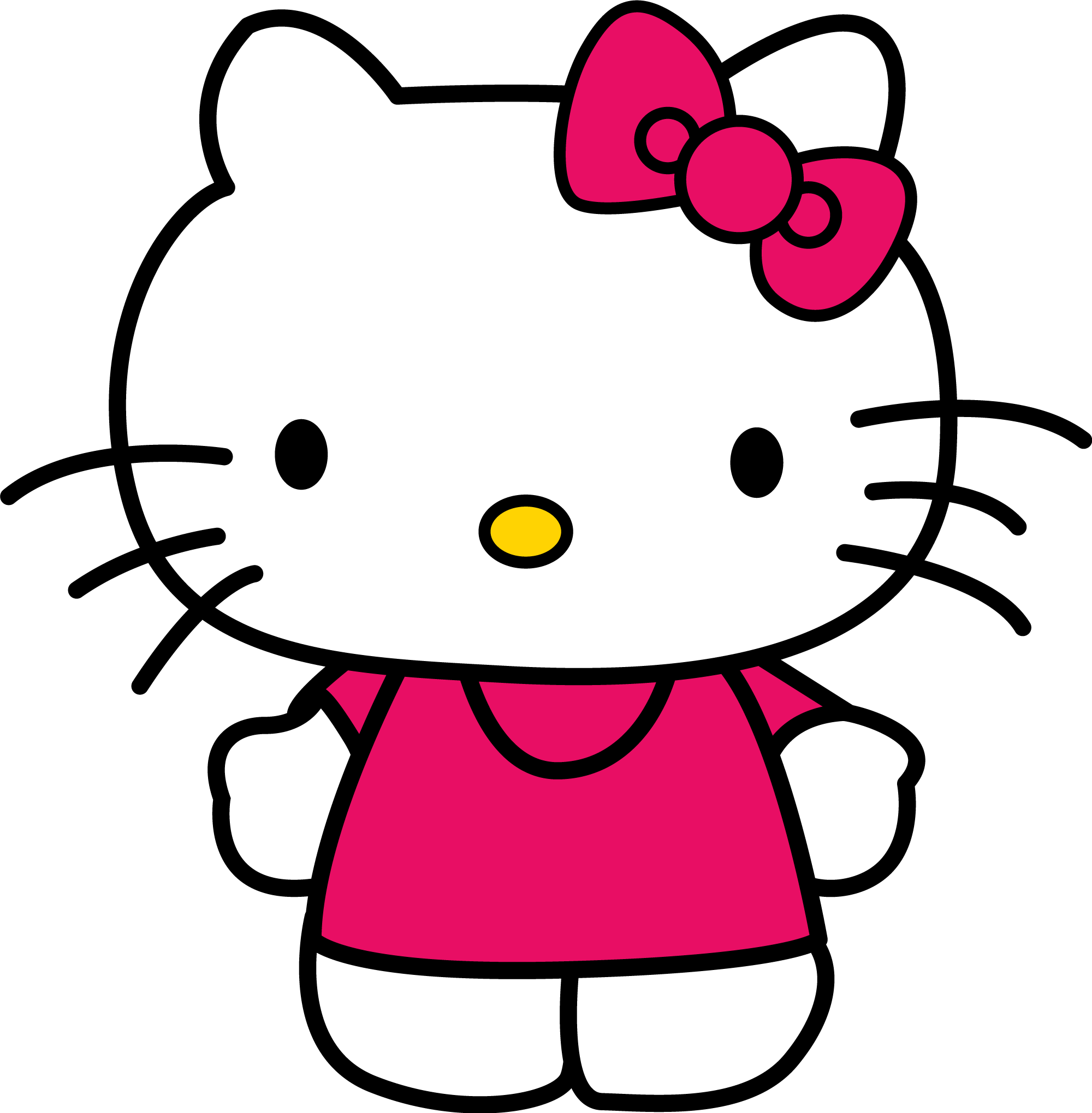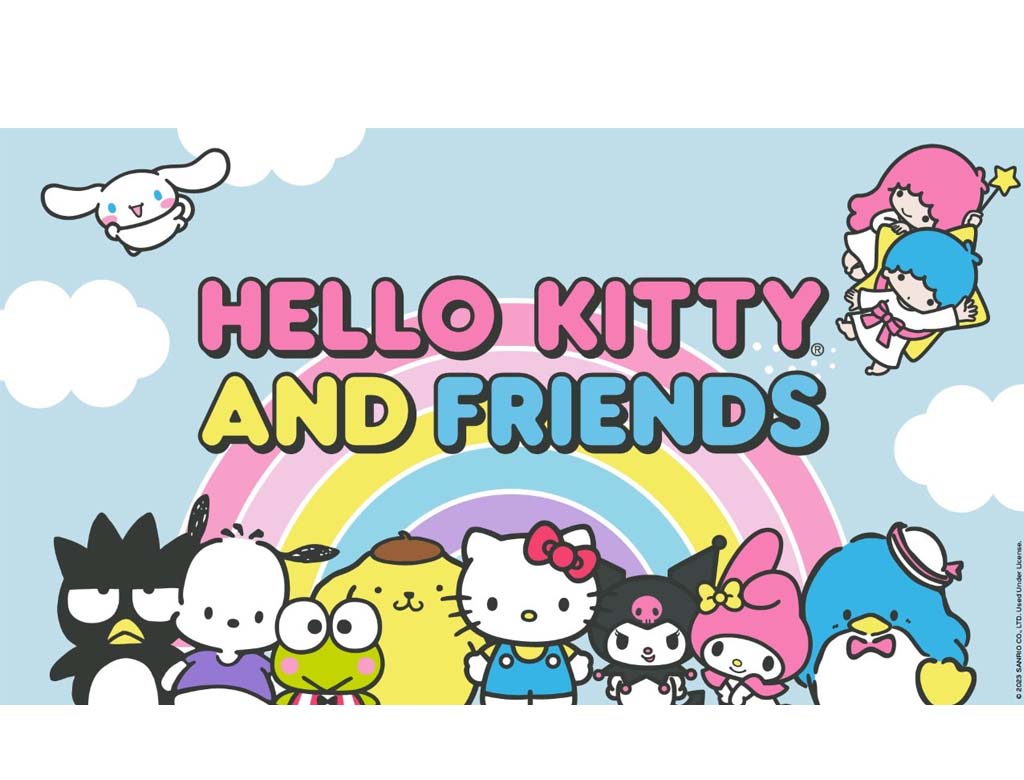When you think of cute characters, Hello Kitty is undoubtedly one of the first that comes to mind. Since its creation, this adorable feline has captured the hearts of millions across the globe. But where did Hello Kitty originate from? This article delves into the rich history and cultural significance of this beloved character, exploring its origins and evolution over the decades.
Hello Kitty's journey began in Japan, a country known for its unique blend of traditional and pop culture. From its humble beginnings to becoming a global phenomenon, Hello Kitty has transcended borders and generations, making it one of the most recognizable characters in the world.
In this article, we will explore the fascinating story of Hello Kitty's origins, its creator, and how it has influenced popular culture. Whether you're a fan or simply curious about this iconic character, you'll find everything you need to know right here.
Read also:Andy Reid Coaching History A Comprehensive Journey Through Success And Legacy
Table of Contents
- Biography of Hello Kitty
- Where Did Hello Kitty Originate From?
- The Creator Behind Hello Kitty
- Hello Kitty's Unique Design
- How Hello Kitty Became Globally Popular
- Cultural Impact of Hello Kitty
- The Business of Hello Kitty
- Hello Kitty Variations and Collaborations
- Criticism and Controversies
- The Future of Hello Kitty
Biography of Hello Kitty
Hello Kitty is more than just a character; she has a detailed backstory that adds to her charm. Below is a summary of her "biography" in a tabular format:
| Attribute | Details |
|---|---|
| Name | Hello Kitty |
| Date of Birth | November 1, 1974 |
| Place of Birth | London, England |
| Age | 5 years old (perpetually) |
| Family | Mom (Mary), Dad (George), and Sister (Mimmy) |
| Hobbies | Baking cookies, traveling, and making new friends |
Where Did Hello Kitty Originate From?
Hello Kitty was born in Japan, but interestingly, her backstory places her origin in London, England. This decision was made to give the character a more international appeal. The concept of Hello Kitty emerged in 1974 when Sanrio, a Japanese company known for its cute characters, wanted to create a mascot for their new line of products.
The inspiration for Hello Kitty came from the idea of creating a character that represented "cute" or "kawaii" in Japanese culture. At the time, Sanrio was looking for a way to stand out in the crowded market of toys and accessories. Hello Kitty's simple yet charming design was the perfect answer to this challenge.
Inspiration Behind Hello Kitty's Creation
Sanrio's founder, Shintaro Tsuji, was inspired by the rising popularity of cat-themed characters in the 1970s. However, instead of copying existing designs, he wanted to create something unique. Hello Kitty's design was based on a British-themed concept, which included her checkered bow and sweet demeanor.
The Creator Behind Hello Kitty
The creator of Hello Kitty is Yuko Shimizu, a talented artist who worked at Sanrio during the early 1970s. Yuko's vision for Hello Kitty was to create a character that was both simple and timeless. Her goal was to design a figure that would appeal to people of all ages and cultures.
Yuko Shimizu's influence on Hello Kitty's design is evident in the character's lack of a mouth. This decision was made to allow fans to project their own emotions onto the character, making her more relatable and versatile.
Read also:Si Swim 2024 Your Ultimate Guide To The Swimwear Industrys Biggest Event
Who Is Yuko Shimizu?
Yuko Shimizu is a renowned Japanese artist and illustrator. Her work has been featured in various publications and exhibitions worldwide. Beyond creating Hello Kitty, Yuko has contributed to the success of many other Sanrio characters, cementing her legacy in the world of character design.
Hello Kitty's Unique Design
Hello Kitty's design is instantly recognizable, thanks to its minimalist approach. The character features a round head, large eyes, and a ribbon tied around her ear. One of the most notable aspects of Hello Kitty's design is the absence of a mouth, which allows fans to interpret her expressions in their own way.
Over the years, Hello Kitty's design has undergone subtle changes to keep up with evolving trends. However, the core elements of her appearance remain unchanged, ensuring that she stays true to her original charm.
Key Design Elements of Hello Kitty
- Round head with large, expressive eyes
- Red checkered bow on the left ear
- Simple, clean lines for a timeless look
- No mouth to allow for emotional interpretation
How Hello Kitty Became Globally Popular
Hello Kitty's rise to fame began in Japan, where her cute and approachable design quickly won the hearts of children and adults alike. By the late 1970s, the character had gained international recognition, thanks to Sanrio's strategic marketing efforts.
Sanrio expanded its product line to include everything from stationery to clothing, making Hello Kitty accessible to a wide range of consumers. The character's versatility allowed her to appeal to people of all ages, from young children to fashion-conscious adults.
Global Expansion of Hello Kitty
By the 1980s, Hello Kitty had become a household name in countries like the United States, Europe, and Asia. Sanrio's decision to collaborate with well-known brands and designers further boosted the character's popularity. Today, Hello Kitty merchandise can be found in virtually every corner of the world.
Cultural Impact of Hello Kitty
Hello Kitty's influence extends far beyond the realm of toys and accessories. The character has become a symbol of Japanese pop culture and a representation of the "kawaii" aesthetic. Her universal appeal has made her a cultural icon, bridging gaps between different cultures and generations.
In addition to her role as a pop culture phenomenon, Hello Kitty has also been used to promote social causes and raise awareness for various issues. Her positive image and widespread recognition make her an ideal ambassador for charitable initiatives.
Hello Kitty and Global Culture
Hello Kitty has inspired countless artists, designers, and creators around the world. From fashion shows to art exhibitions, her influence can be seen in various forms of media. The character's ability to transcend cultural boundaries has solidified her place in the global consciousness.
The Business of Hello Kitty
Sanrio's success with Hello Kitty has been nothing short of remarkable. The character generates billions of dollars in revenue each year, making her one of the most profitable franchises in the world. Sanrio's business model focuses on creating high-quality products that appeal to a wide range of consumers.
In addition to traditional merchandise, Sanrio has expanded into new markets, such as theme parks, mobile apps, and digital media. These ventures have helped keep Hello Kitty relevant in an ever-changing marketplace.
Sanrio's Business Strategy
- Focus on quality and innovation in product design
- Collaborate with global brands to expand reach
- Invest in new technologies and digital platforms
- Engage with fans through interactive experiences
Hello Kitty Variations and Collaborations
Over the years, Hello Kitty has undergone numerous transformations, resulting in a wide variety of styles and themes. From seasonal designs to limited-edition collaborations, there's always something new for fans to discover.
Sanrio has partnered with numerous brands and designers to create exclusive Hello Kitty products. These collaborations often feature high-end fashion pieces, luxury accessories, and even home decor items. The character's versatility allows her to seamlessly integrate into different product categories.
Examples of Hello Kitty Collaborations
- Victoria's Secret
- Moschino
- Converse
- Disney
Criticism and Controversies
Despite her widespread popularity, Hello Kitty has not been immune to criticism. Some critics argue that the character's commercialization has diluted its original charm. Others have raised concerns about cultural appropriation, given that Hello Kitty's backstory places her origin in England rather than Japan.
Sanrio has addressed these criticisms by emphasizing the character's universal appeal and commitment to promoting positive values. The company continues to evolve its approach to ensure that Hello Kitty remains relevant and meaningful to fans worldwide.
Addressing Controversies
Sanrio has taken steps to address criticisms by engaging with fans and incorporating feedback into its product development process. The company also prioritizes partnerships with organizations that align with its values, ensuring that Hello Kitty remains a force for good in the world.
The Future of Hello Kitty
As Hello Kitty enters its fifth decade, the character shows no signs of slowing down. Sanrio continues to innovate and expand its product line, ensuring that Hello Kitty remains a relevant and beloved figure in the global marketplace.
With new technologies and platforms emerging, the possibilities for Hello Kitty's future are endless. From virtual reality experiences to augmented reality apps, the character is poised to captivate new generations of fans in exciting ways.
What's Next for Hello Kitty?
The future of Hello Kitty is bright, with endless opportunities for growth and innovation. By staying true to its core values while embracing new trends and technologies, the character will undoubtedly continue to inspire and delight fans for years to come.
Kesimpulan
Hello Kitty's journey from a simple character design to a global phenomenon is a testament to the power of creativity and innovation. Her origins in Japan, combined with her universal appeal, have made her a cultural icon that transcends borders and generations.
We invite you to share your thoughts and experiences with Hello Kitty in the comments below. Whether you're a long-time fan or a newcomer to the world of Hello Kitty, your voice matters. Don't forget to explore other articles on our site for more fascinating insights into the world of pop culture and beyond.


